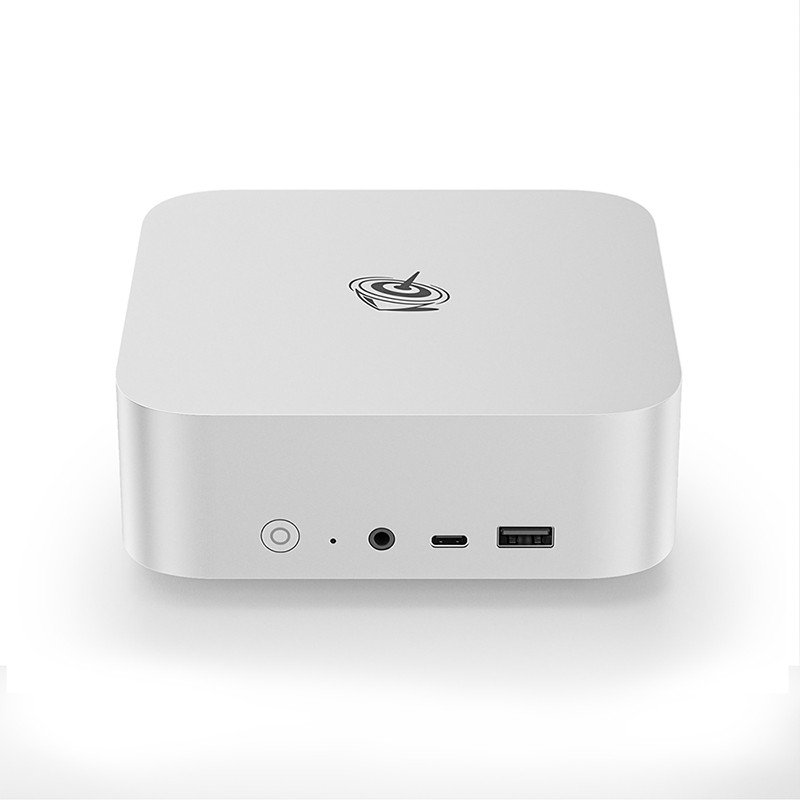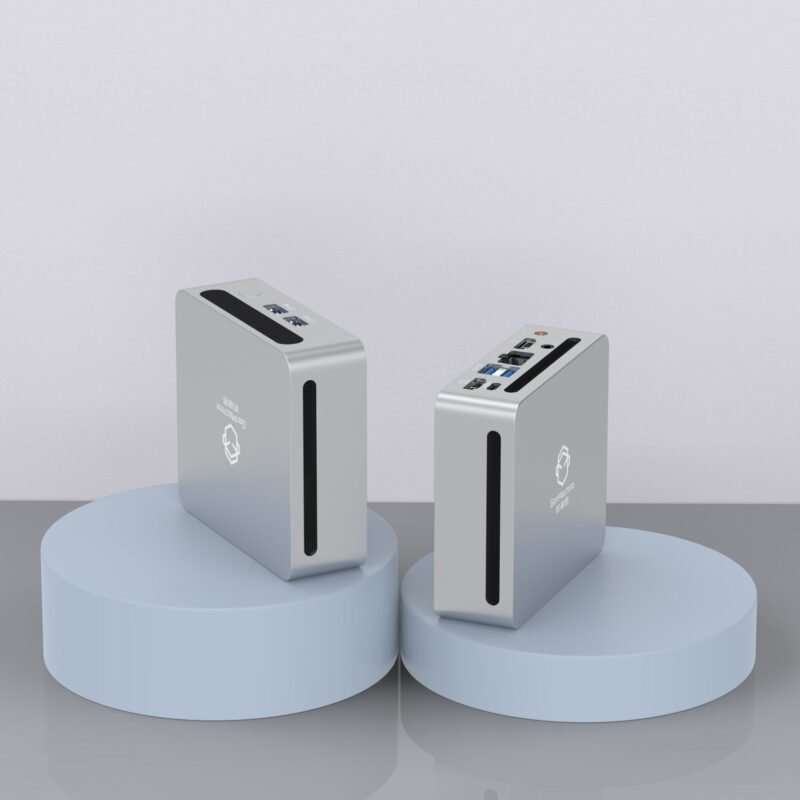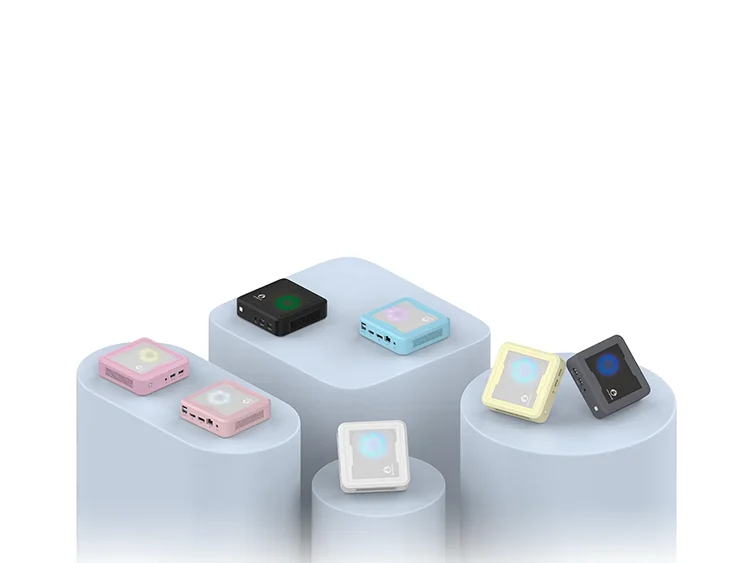Walk into any electronics store this year and you’ll see shelves lined with Mini PCs waving shiny new labels—“Ryzen 8040,” “Intel Core Ultra 5/7/9 series,” even Apple’s latest slice of silicone. Yet shoppers hunting for a budget Mini PC soon discover a paradox: newer isn’t always better value. Tucked among the hype, last year’s Ryzen 7840HS Mini PCs keep popping up in “most‑recommended” threads, reviews, and YouTube tear‑downs. Why do tech reviewers still buy them for themselves? In 2025, the answer is a sweet blend of performance, thermals, and plain‑old dollars per watt—proof that a mature design can outrun a fresh flagship.
What Makes the Ryzen 7840HS Stand Out in Mini PCs
1. Core Architecture & Process (CPU)
- Next-Gen Architecture: Built on AMD’s Zen 4 architecture.
- Advanced Fabrication: Utilizes TSMC’s leading 4nm process for high efficiency.
- High Performance: Features 8 cores and 16 threads, operating within a 35–54W power envelope.
2. Dedicated AI Engine (NPU)
- Hardware: Equipped with an XDNA-based Ryzen AI NPU.
- Local Processing: Handles tasks like background blur in Teams, real-time transcription, and light inference workloads.
- Speed & Privacy: Operates locally on the device, ensuring faster response times and better data privacy without cloud dependency.
3. High-Performance Graphics (iGPU)
- Graphics Model: Features the Radeon 780M based on RDNA 3 architecture.
- Gaming Capability: Delivers smooth 60 FPS at 1080p in titles like Fortnite.
- Benchmark Performance: Matches or outperforms the GTX 1650 in various tests, particularly in well-optimized games like League of Legends.
- AI Acceleration: Easily accelerates creative AI tools such as Stable Diffusion.
4. Overall Value & Form Factor
- Perfect Balance: Combines heavy-duty CPU power, creative/gaming GPU performance, and smart AI capabilities.
- Mini PC Optimized: Designed to fit into compact systems while running cool, quiet, and efficient.

Price to Performance vs. Newer Chips
| Model | Launch Date | CPU/GPU Performance | Architecture | Market Notes |
|---|---|---|---|---|
| Ryzen 7840HS | 2023 | Strong; solid real-world results | Zen 4 | Wide availability; significantly lower prices in 2025 |
| Ryzen 8040 Series | Late 2023 | Small clock bump; single-digit benchmark gains | Zen 4 | Improvements mostly noticeable in charts, not day-to-day |
| Ryzen 8845HS | 2024 | Nearly identical to 7840HS in CPU/GPU | Zen 4 | Minor refresh; real-world differences are small |
| Ryzen 7 H260 | Early 2025 | Essentially a tuned 7840HS; negligible differences | Zen 4 | Subtle power profile adjustments; very similar results |
Compared with Ryzen 8040:AMD’s Ryzen 8040 series, introduced at the end of 2023, delivered higher NPU TOPS and small clock speed bumps. On paper these changes were measurable, but in practice benchmark gains usually hovered in the single digits—noticeable in charts, less so in day-to-day use.
Compared with Ryzen 8845HS:When compared to the Ryzen 8845HS launched in 2024, the earlier 7840HS shows nearly identical CPU and GPU performance. The main distinction is its less advanced AI engine, a difference that matters mostly in edge AI workloads rather than everyday multitasking or light content creation. For most users, the performance gap remains negligible.
Compared with Ryzen 7 H260:The Ryzen 7 H260 debuted in AMD’s early-2025 refresh as essentially a rebadged 7840HS with subtle power profile adjustments. It retains the same Zen 4 architecture and core specifications, with only minor tuning that sets it apart from its predecessor. Compared with the established 7840HS, performance differences are negligible—benchmarks may show small variations, but real-world workloads reveal near-identical results, aside from slightly reduced AI engine throughput.
Meanwhile, market dynamics have shifted in favor of the 7840HS. With mature yields and broader availability, complete systems built around it are now priced well below their 2024 launch levels. Today, AMD mini PCs featuring a 7840HS with 32 GB RAM and a 1 TB PCIe 4.0 SSD can be found for under US $500—a price segment where Intel’s 14th-gen NUC boxes or Apple’s base M2 Mac mini often cost more or lack similarly balanced AI hardware. For buyers chasing the best ratio of frames, tokens, and dollars, the 7840HS continues to stand out.
Use Cases of Ryzen 7840HS Mini Pc That Still Shine in 2025
AI-enhanced productivity. Local AI tasks like speech transcription or design assistance in PowerPoint feel responsive thanks to the integrated NPU, which takes on workloads that would otherwise hit the cloud.
Content creation on a carry-on budget. The Radeon 780M iGPU handles lightweight 4K editing in DaVinci Resolve and layered PSDs smoothly, while AV1 hardware encoding keeps a 1080p OBS livestream steady as Zen 4 cores manage overlays.
Edge computing and light AI deployment. Start-ups prototyping small-scale vision models, or integrators building presence detection into smart offices, benefit from a quiet fan curve and enough FP16 throughput to accelerate rapid iteration.
Everyday multitasking. With low-noise cooling profiles, compact Mini PCs fade into the background while Chrome, Outlook, and multiple Docker containers run comfortably under a 25 W envelope.

Conclusion
A Ryzen 7840HS mini PC in 2025 is the tech equivalent of a seasoned marathoner: not the newest runner, but the one who knows the route and paces efficiently. For less than six hundred bucks you land real‑world AI readiness, console‑level graphics, and whisper‑quiet versatility that fits behind a monitor arm. In a market obsessed with peak specs, value per watt—and per square inch of desk space—still wins.
FAQ
Is the Ryzen 7840HS Mini PC powerful enough for 4K video editing in DaVinci Resolve?
Yes. With 32 GB of RAM and a fast SSD, the integrated Radeon 780M decodes and scrubs 4K H.264/H.265 footage smoothly, while the Zen 4 cores handle color grading nodes without the dreaded “Resolve is not responding” popup.
How does a 7840HS mini PC compare to an Intel Core Ultra NUC for AI tasks?
Intel’s neural engine still leans on GPU off‑loading, whereas Ryzen’s dedicated NPU carries on‑device inference at lower power. For background‑blur or local transcription, AMD maintains a small but noticeable efficiency edge.
Will an external GPU (eGPU) bottleneck the system?
Through USB4 (40 Gbps) you’ll lose roughly 15–20 % of desktop PCIe bandwidth, but pairing a compact RTX 4060 via eGPU turns the mini box into a respectable 1440p gaming or CUDA workstation without thermal drama.





